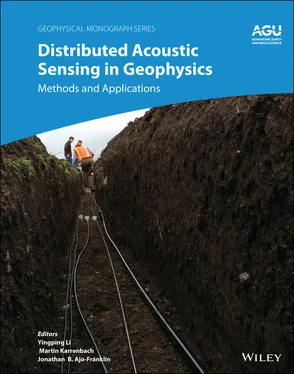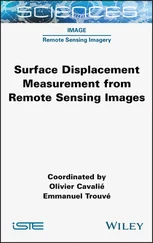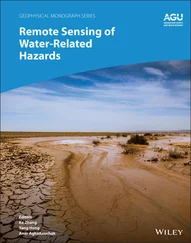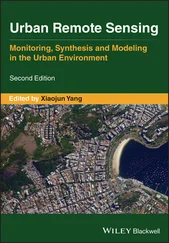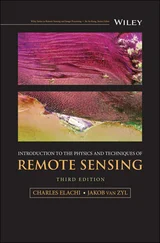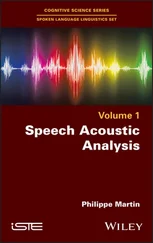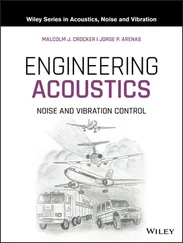For engineered fiber (Farhadiroushan et al., 2021), reflectivity can be engineered to be hundreds of times higher than the normal Rayleigh level, without any significant problems with crosstalk, such that R = 100 · R BS· τ = − 45 dB . As a result, sensitivity is ten times higher, at around 1 picostrain , which corresponds to a 100x (20 dB) improvement in acoustic signal sensitivity.
It is important to compare the shot noise level of DAS with the noise level of high‐sensitivity geophones and seismometers. The DAS white noise value should be added to flicker noise with coefficient μ and corrected for spatial filtering ( Equation 1.46) as:
(1.47) 
The comparison in Figure 1.28demonstrates that DAS sensitivity is compatible with geophones. The noise spectrum data for Sercel SG5‐SG10 was adapted from Fougerat et al. (2018), and the seismometer Streckeisen STS‐2 data from Ringler & Hutt (2010) and Wielandt & Widmer‐Schnidrig (2002).
The sensitivity of DAS can even be improved at low frequencies by extending the gauge length from L 0= 10 m to L 0= 30 m , but at the cost of increased noise at frequencies of more than 70 Hz. Also, 30 m data for DAS with engineered fiber is presented with synthetic gauge length optimization ( Equation 1.44). It is worth mentioning that this optimization can be effectively applied to DAS with engineered fiber only, as it has no significant pink noise and can be effectively spatially averaged. As is clear from Figure 1.29, the performance of DAS with engineered fiber can reach seismometers, and it is deep below Peterson’s low noise model level (Peterson, 1993). So, the engineered fiber antenna is an equivalent of a set of multiple seismic stations and can be used for passive seismic applications. Moreover, DAS with engineered fiber has unique sensing capability below 1 Hz, where gravitational wave detectors have limited environmental isolation (Matichard et al., 2015); DAS can be potentially used for such applications.
We now turn our attention to the increase in dynamic range achievable using DAS with an engineered fiber. The acoustic algorithm transforms DAS intensity signals into a phase shift proportional to the fiber elongation value. The algorithm is based on an ambiguous function such as ATAN( x ), which give a valid result only inside a limited region (Itoh, 1982). As was analyzed in Section 1.1(titled ‘Distributed Acoustic Sensor (DAS) Principles and Measurements’), a set of different algorithms can be used, depending on the order of phase tracking. For the first and second order, we have:
(1.48) 
(1.49) 
For limits ( Equations 1.48– 1.49), it is clear that the maximum recoverable strain ε 1,2will depend on the algorithm order 1 or 2, and can also be increased using a higher sampling frequency F s. For a harmonic signal cos(2 πFt ), we can normalize strain results as:
(1.50) 
(1.51) 
The maximum strain comparison for the first and second order tracking algorithm ε 1 and ε 2( Equations 1.50– 1.51) is presented in Figure 1.30for F S= 50 kHz and L 0= 10 m . The second order algorithm can deliver measurements of fiber strain up to fiber breakage point (~10%) at frequencies of around 10 Hz.
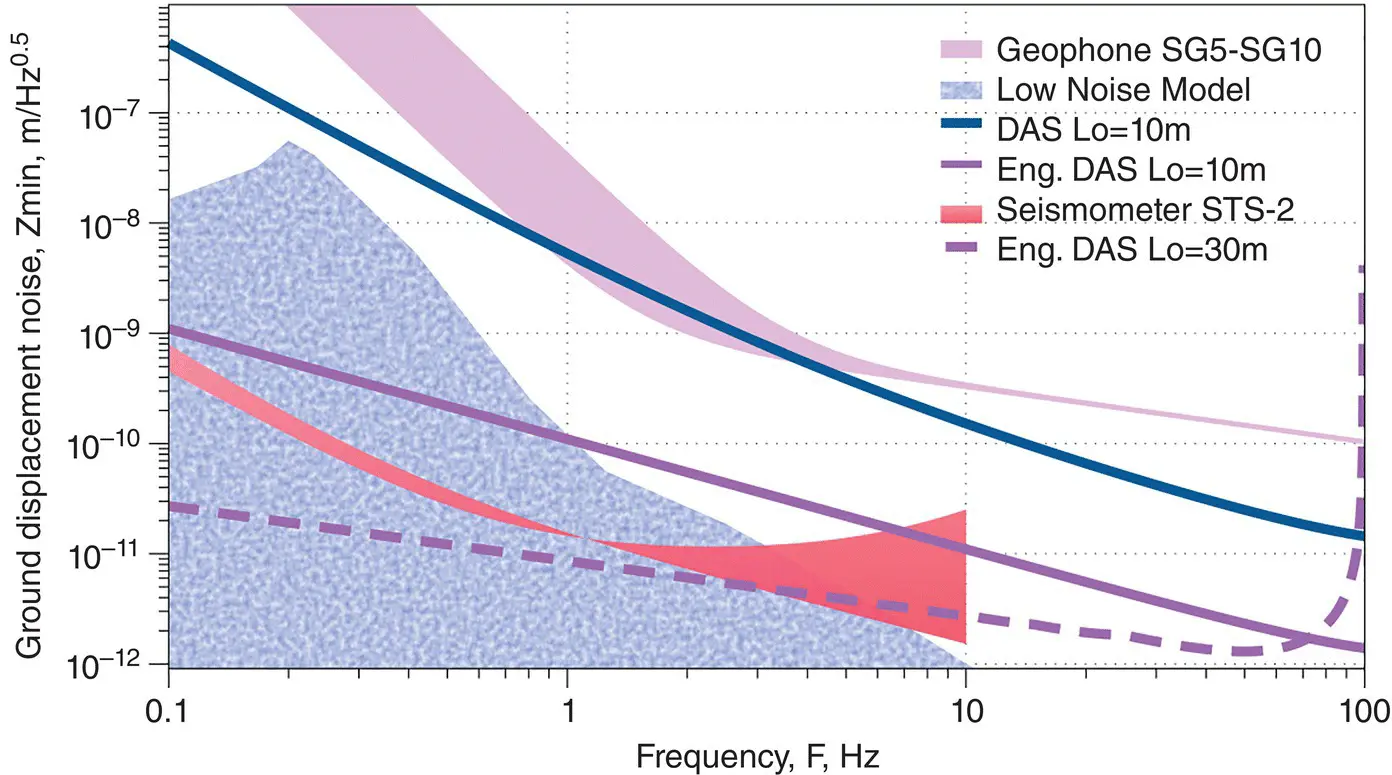
Figure 1.29 Displacement noise comparison of DAS (with and without engineered fiber) with seismometer and geophone. 30 m DAS data are for synthetic gauge length.
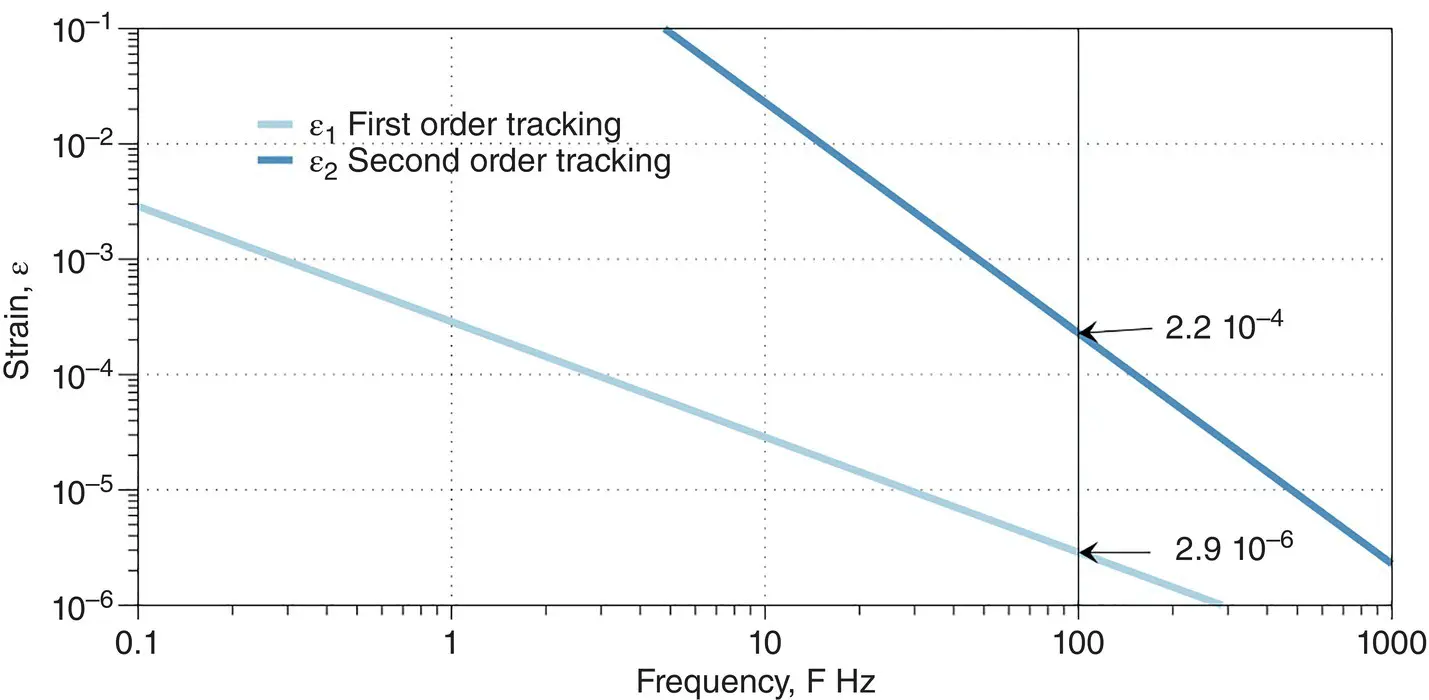
Figure 1.30 Maximum strain comparison of first and second order algorithms for DAS.
We can now estimate the maximum DAS dynamic range D as:
(1.52) 
Using the real noise level ε min= 0.03 nanostrain from Miller et al. (2016), we can estimate D = 99 dB for a maximum value ε 1= 2.9 μstrain . This estimation gives the practical upper limit for seismic DAS at 100 Hz using Rayleigh scattering. Generally speaking, the second order tracking algorithm has limited applicability for a conventional DAS because flicker noise pulses can reach π and destroy measurements in accordance with Equation 1.49. Nevertheless, 120 dB was achieved in Parker et al. (2014) when the fiber elongation zone was significantly smaller than the gauge length and pulsewidth, such that the flicker noise was suppressed. However, when a continuous seismic signal expands the reflectivity zone, then the reflection can disappear, and the signal has ambiguity. Fortunately, in engineered fibers, the scatter center zones are well defined, and so the reflectivity change is negligible. As a result, we can optimistically estimate a maximum D = 167 dB for engineered fiber using ε min= 1 picostrain and maximum ε 2= 220 μstrain —see Figure 1.30.
The dynamic range of DAS with engineering fiber was tested during a dry alluvium geology series of chemical explosions, including 50,000 kg TNT‐equivalent at 300‐m depth‐of‐burial (Abbott et al., 2019). “Two orders of magnitude more data relative to traditional geophones/accelerometers” was successfully recorded.
Summarizing, we can conclude that theoretical estimations demonstrate that the performance of DAS with engineered fiber can potentially exceed that of conventional geophones and seismometers. In general, given that the overall sensitivity of a DAS system is a function of the coupling, cable, fiber, electronics, and digital signal processing, field data is most convincing, and, in the next section, we will discuss some examples of high definition seismic and microseismic data that demonstrate the benefits of the engineered fiber DAS solution as compared to conventional DAS and geophones.
1.3.3. Field Trial Results
A comparison of DAS with standard and engineered fiber for a seismic sweep signal is presented in Figure 1.31. This measurement was provided using two different fibers placed side by side in the same optical cable, so the elongation of both fibers was identical. The top graphs (a) and (c) demonstrate the difference between the time‐distance representation; the right panel (c), which represents engineered fiber, is visibly cleaner than the left panel (a). The detected seismic signal has the same shape (around 10 nm peak to peak for a channel 898) for engineered (d) and standard (b) fiber, except noise. Some change in amplitude (20%) can be explained by incomplete averaging of the DAS signal over distance, as is shown in Figure 1.7. There was less variation in the amplitude level for engineered fiber, and this stability can be important for 3D VSP, as was shown in Figure 1.21.
Читать дальше
